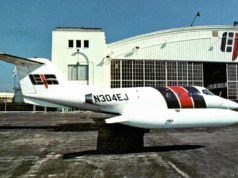There used to be just two ways to use a business aircraft: own and operate one, or charter as required. The former required capital investment, and created a complex tax situation involving asset depreciation as well as operating expenses. The latter was much simpler: pay-as-you-fly.
In 1963, Executive Jet Aviation (EJA) created block charter. This arrangement offered an availability guarantee and volume discount in return for a minimum annual travel commitment, making access to business jets more attractive. Regional jet and turboprop charter operators sprung up all over the world. Many, like Jet Aviation, Clay Lacy, and Priester Aviation, still are flying today.
Changes in tax laws first prompted industry innovation in 1971 when the U.S. Internal Revenue Service introduced accelerated depreciation: Modified Accelerated Cost Recovery System (MACRS) for capital equipment. Now business aircraft in charter service could be depreciated in five years, provided that they were “commercial aircraft” available for outside charter. This opened the door for the first aircraft management companies, which provided fleet discounts on virtually all operating expenses, as well as that key tax advantage: the ability to generate charter revenue as a commercial aircraft.
In 1986, EJA became NetJets, and introduced fractional aircraft ownership to the world. Again, tax advantages played a major role in fractional appeal. Those requiring as few as 50 hours of jet charter travel annually (a one-eighth share), could gain the availability, investment, and depreciation advantages of ownership, with a capital investment proportional to their travel requirement.
Block charter reemerged in 2001, as travelers with limited jet usage and no need for tax advantages sought access to fractional fleets like NetJets, FlexJet, and Flight Options. Enter Marquis Jet, the first jet card, which bought subdivided, repriced, and resold NetJets shares. Other fractional companies followed suit with their own jet cards, as did virtually every major charter company, as program simplicity for end users trumped investment advantages.
That development set the stage for the next jet accessibility innovations – and again, tax and investment concerns provided the market impetus.
Much has been written about the 2008 collapse in aircraft values. Many business aircraft users became unwilling to risk the capital investment. And so innovators like Wheels Up, VistaJet, JetSuite, Executive AirShare, XO Jet, and Jet Linx have responded with new alternative lift programs, providing preferred fleet access and an hourly rate guaranteed for the contract term.
Today, as aircraft values recover, it seems there still is a market for simplicity. While questions remain as to whether aircraft ride-sharing will ever move beyond recreational travel, the ongoing need for business travel will drive industry innovation. Given today’s commercial airline travel, that is a very good thing. BAA
Publisher of Business Aviation Advisor, has nearly 50 years in business aviation including executive positions at aircraft management/charter and ground services companies. He is a past director of the NATA and Corporate Angel Network.





